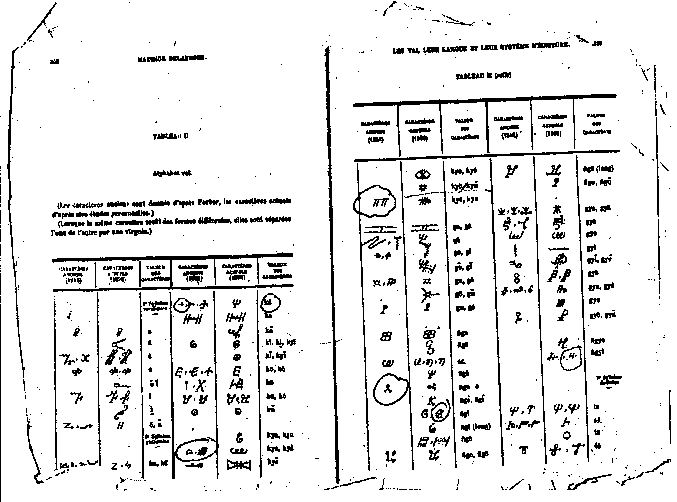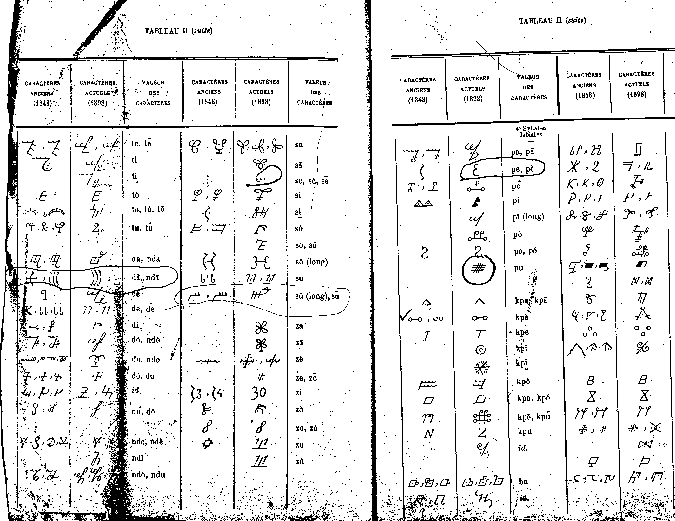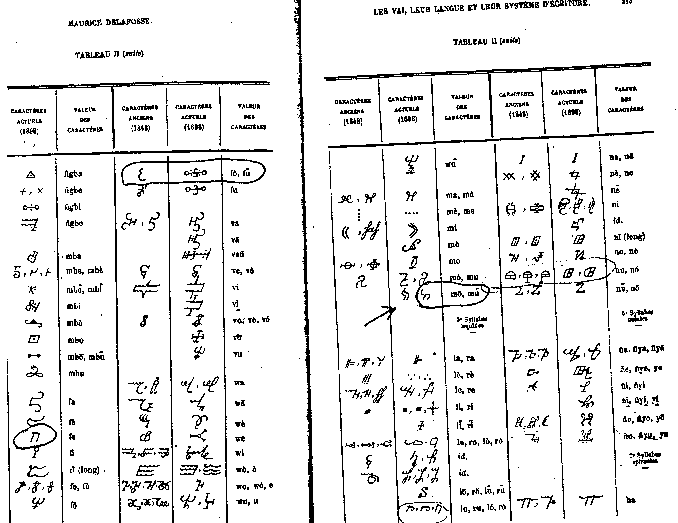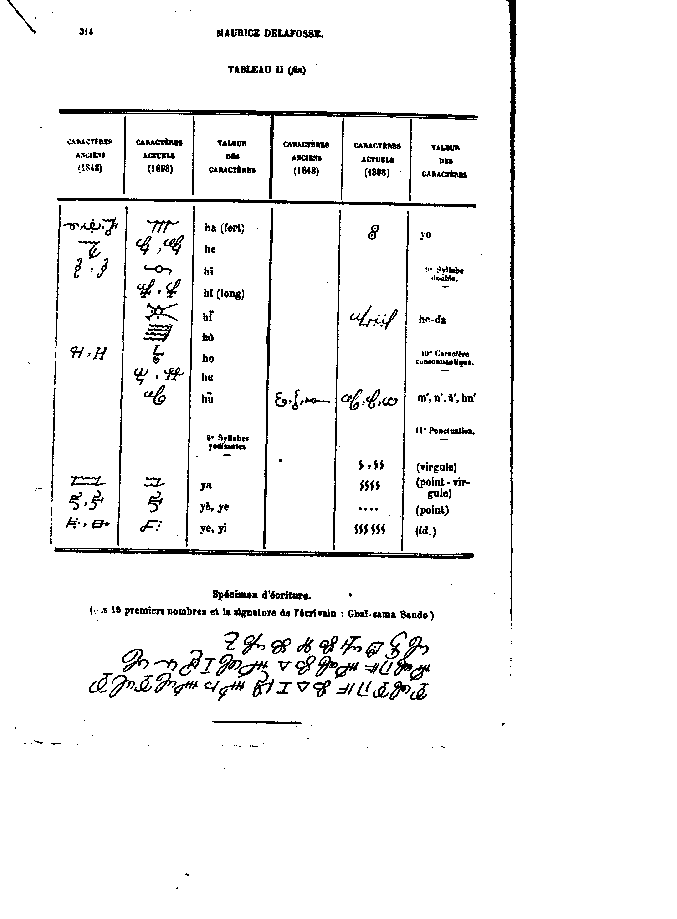

Clyde Winters
Maurice Delafosse mentions that he consulted many literate Vai who claimed that the Vai script was ancient. These Vai also told him that the Vai system of writing was still being used in the mountains to the north. Delafosse did not believe this claim. But he does mention the Vai tradition for an ancient origin of the Vai writing.
The informants mentioned by Delafosse were correct. Many marks similar to those contained in the Vai script were found in the mountains further north in the Grotte de Goundaka and even the Sahara which point to the ancient origin of the Vai inscriptions .







The informants mentioned by Delafosse were correct. Many marks similar to those contained in the Vai script were found in the mountains further north in the Grotte de Goundaka and even the Sahara which point to the ancient origin of the Vai inscriptions (See M.E. Paris, "Recherches sur l'origine de marques di tribus", Bull de l'IFAN, ser B.(1953) pp. 1619-1632; and G. Szumowski, "Vestiges prehistoriques dans la region de Bandiagara", Notes Africaine, (1955) pp. 19-23).
The Vai tradition for an ancient origin of this syllabary recorded by Delafosse was confirmed by the Oued Mertoutek inscription. This inscription is written in Libyco-Berber which was the ancient writing of thge Mande people.
The Libyco-Berber inscriptions predate the inscriptions you discuss above. Lionel Galand, Inscriptions Libyques (Paris,1968,) and H. Lhote, Les Touaregs du Hoggar (Paris,1944, ) discussed these ancient inscriptions. Both Lhote (pp.141-145) and Galand (p.11) made it clear that Libyco-Berber inscriptions were definately not written in Libyan (Punic, Numidian, etc.) or Taureg . The fact that they can be read in Mande support the ancient Mande origin for this writing.